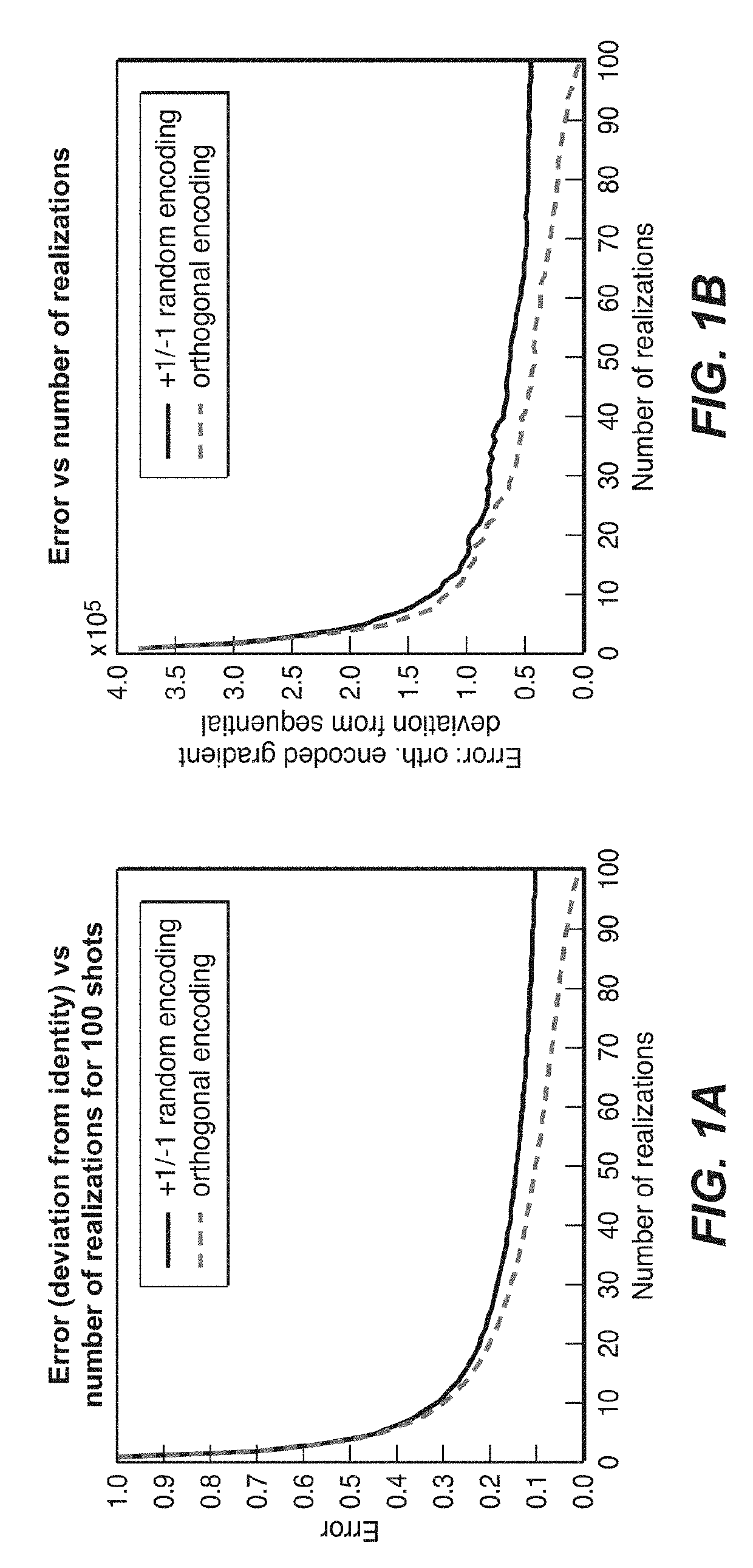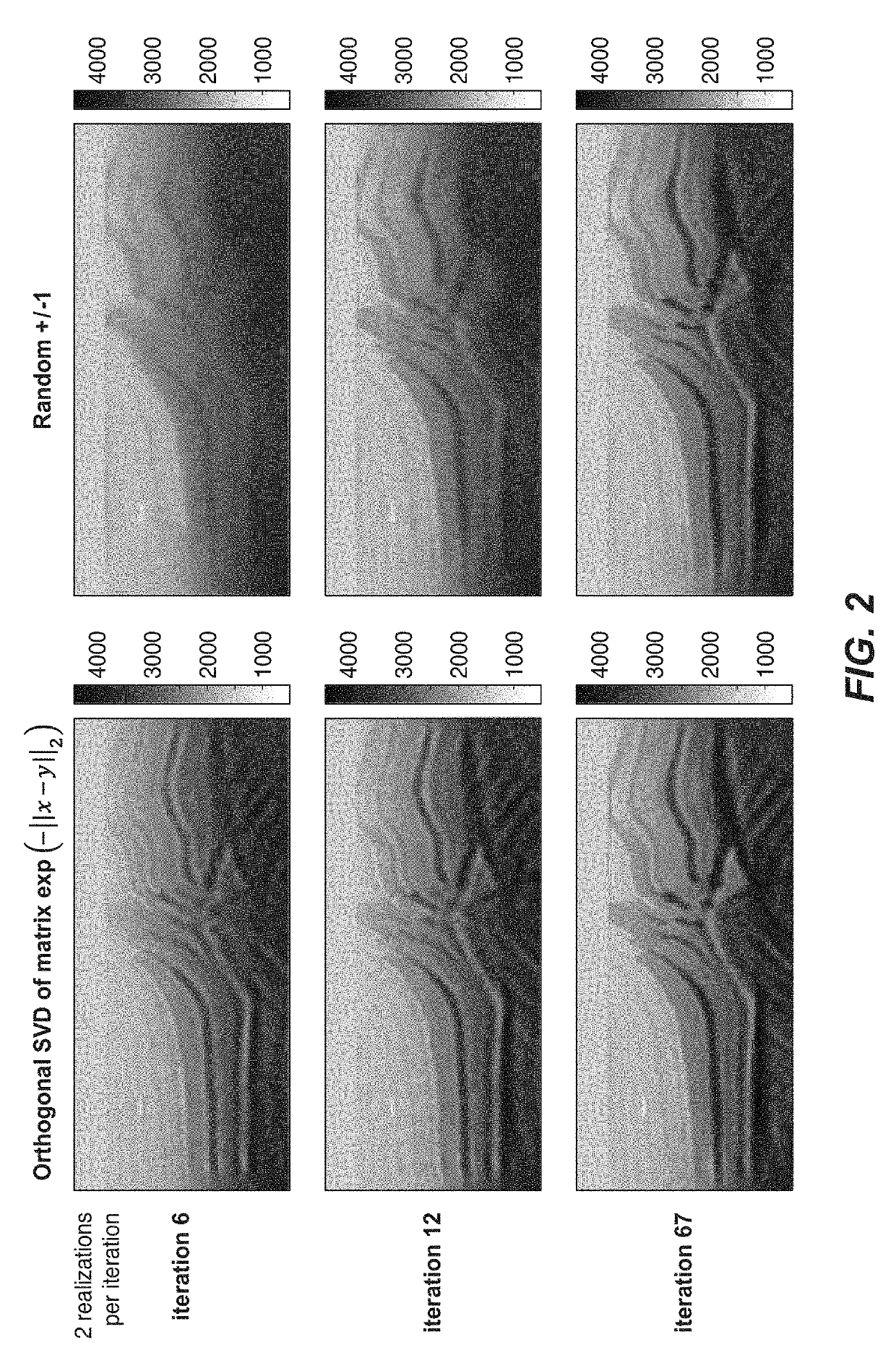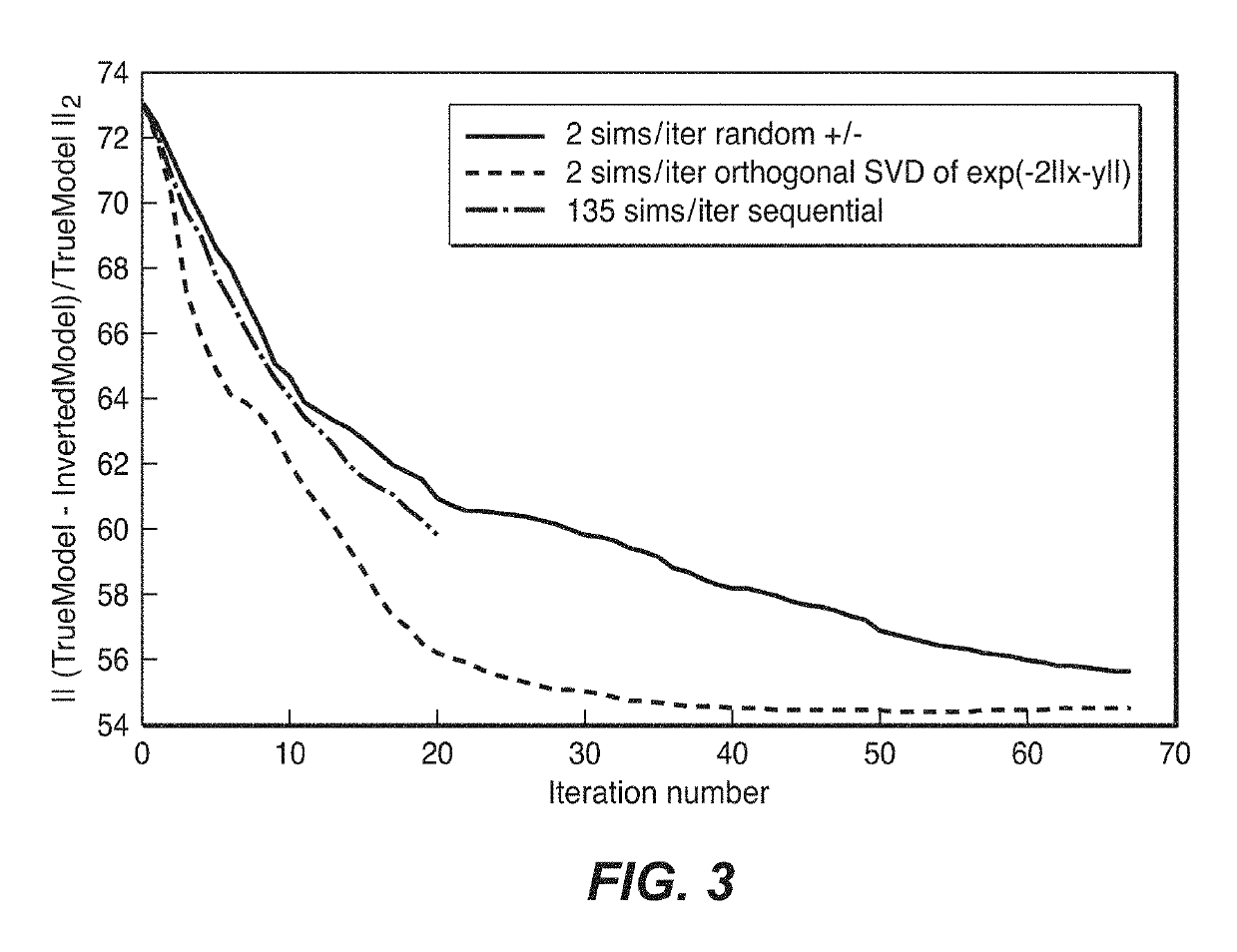Harmonic encoding for FWI
a technology of harmonic encoding and fwi, applied in the field of geophysical prospecting, can solve the problems of insufficient encoding, inability to improve the model, and enormous computer time and resource requirements for fwi
- Summary
- Abstract
- Description
- Claims
- Application Information
AI Technical Summary
Benefits of technology
Problems solved by technology
Method used
Image
Examples
example 1
[0034]Let there be only two sources, and define the vector of weights as a=(a1, a2). Denote by u1, w1 the forward and adjoint wavefields (the inner product of the two at each spatial location gives the gradient) due to source 1 and u2, w2 the respective wavefields due to source 2. Much of the inversion procedure in FWI may be reduced to quadratic forms of such wavefields. Specifically, the gradient used in iterative methods for conventional sequential-source inversion requires the sum of the inner products (u1, w1)+(u2, w2), each obtained by an independent simulation. By contrast, the simultaneous source simulation will produce the inner product
[0035](a1u1+a2u2,a1w1+a2w2)=a1a1(u1,w1)+a1a2(u1,w2)+a2a1(u2,w1)+a2a2(u2,w2).[Eq.1]
A second realization using weights b=(b1, b2) will produce a similar inner product where only the weights are different.
[0036]Applying [Eq. 1] to a and b, one obtains
[0037](a1u1+a2u2,a1w1+a2w2)+(b1u1+b2u2,b1w1+b2w2)=(a1a1+b1b1)(u1,w1)+(a1...
PUM
 Login to View More
Login to View More Abstract
Description
Claims
Application Information
 Login to View More
Login to View More - R&D
- Intellectual Property
- Life Sciences
- Materials
- Tech Scout
- Unparalleled Data Quality
- Higher Quality Content
- 60% Fewer Hallucinations
Browse by: Latest US Patents, China's latest patents, Technical Efficacy Thesaurus, Application Domain, Technology Topic, Popular Technical Reports.
© 2025 PatSnap. All rights reserved.Legal|Privacy policy|Modern Slavery Act Transparency Statement|Sitemap|About US| Contact US: help@patsnap.com



